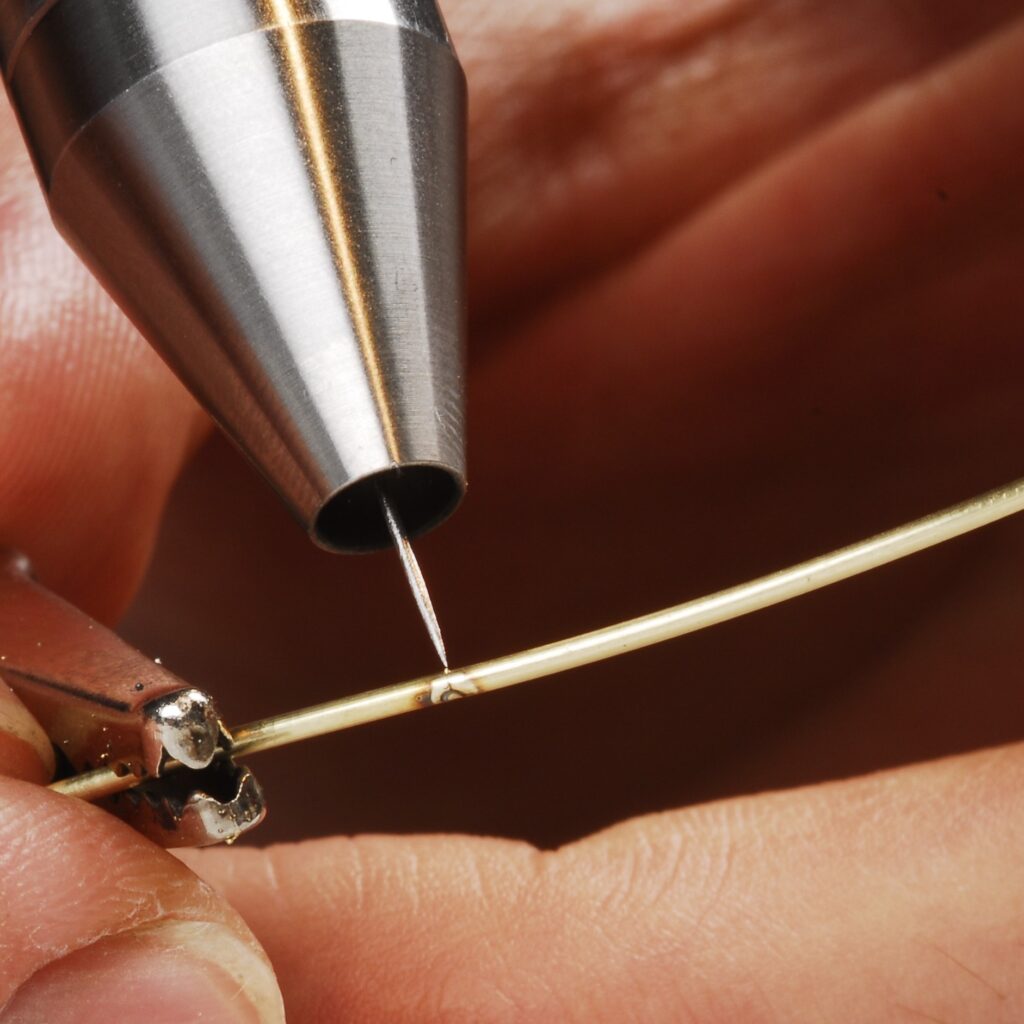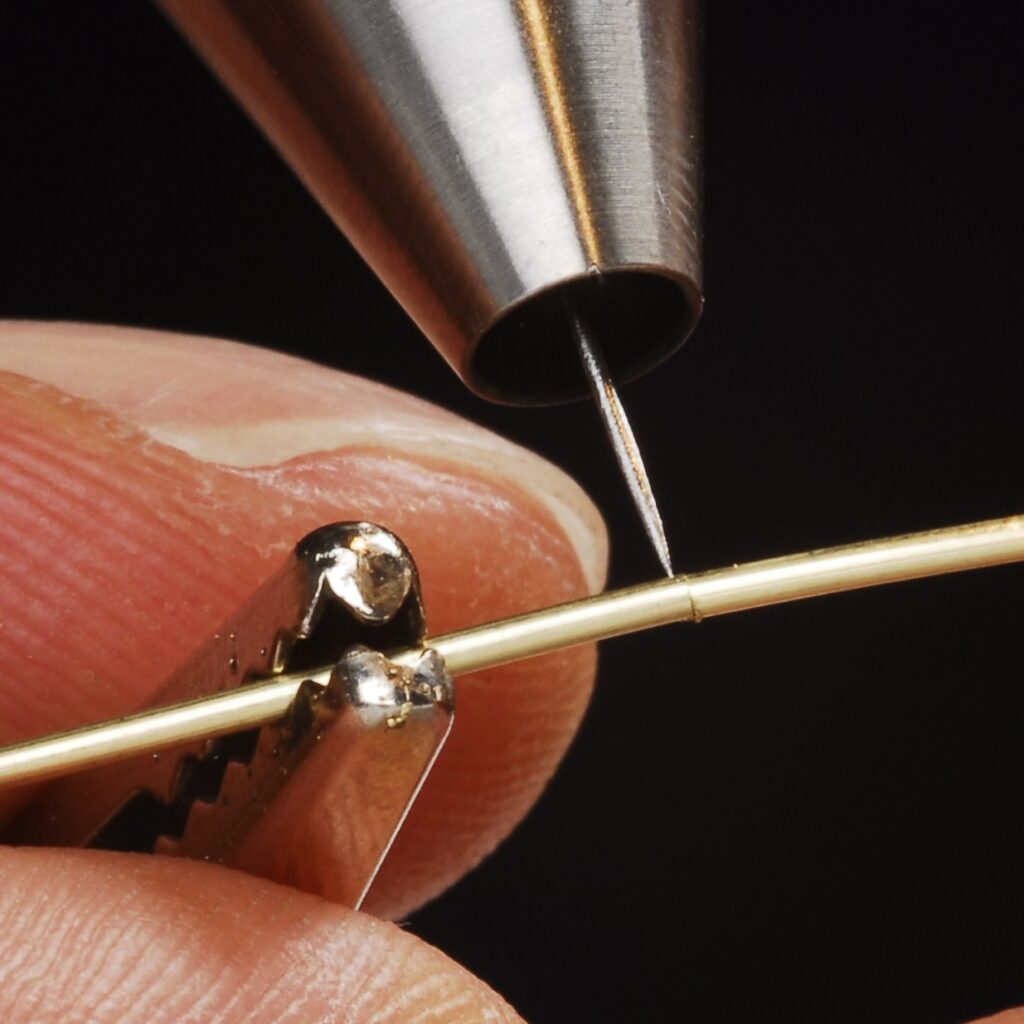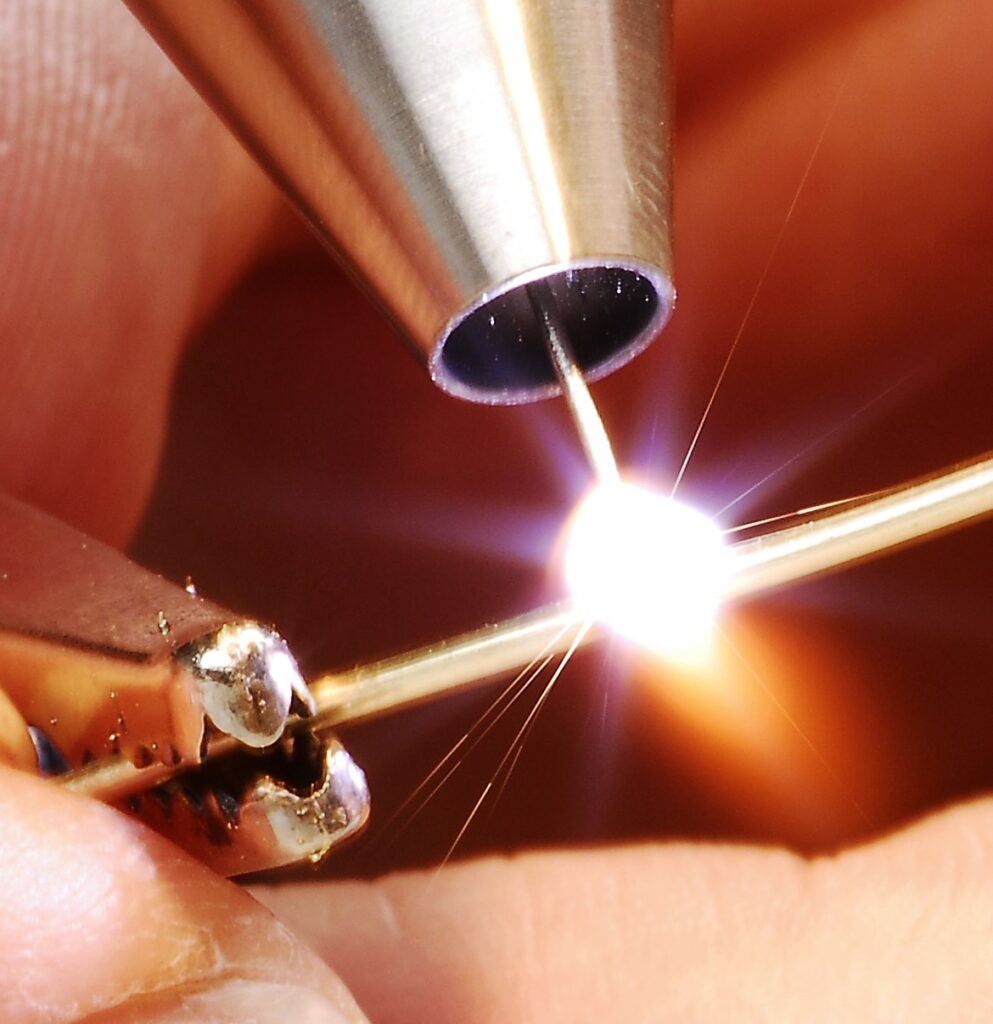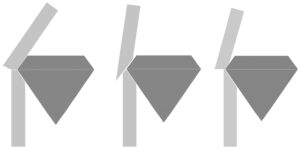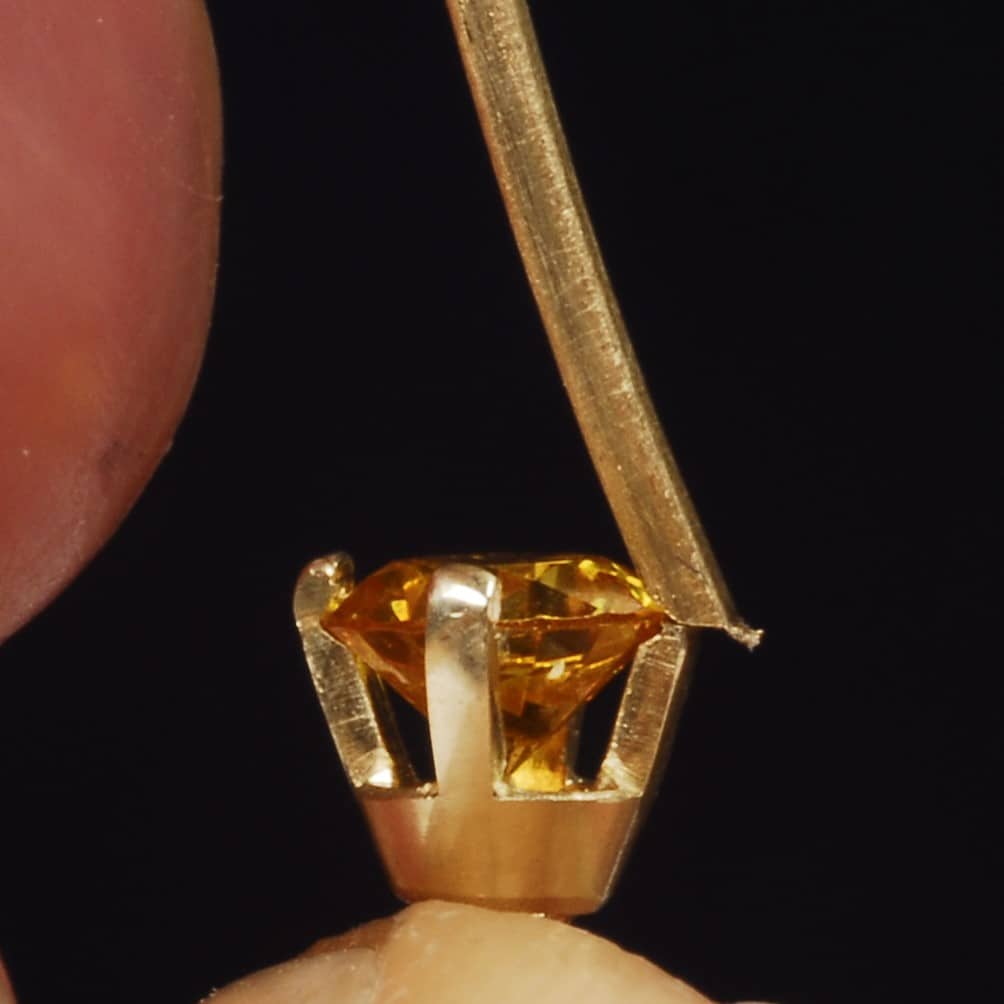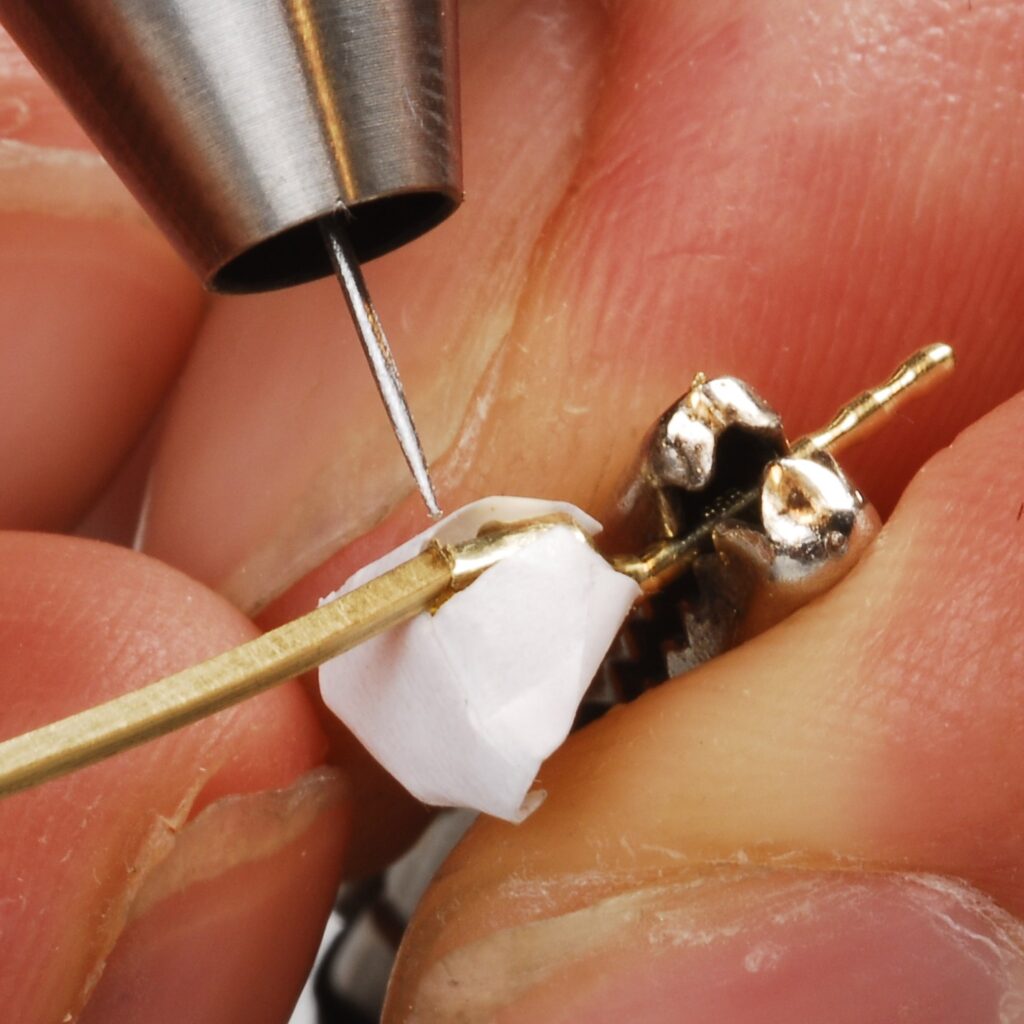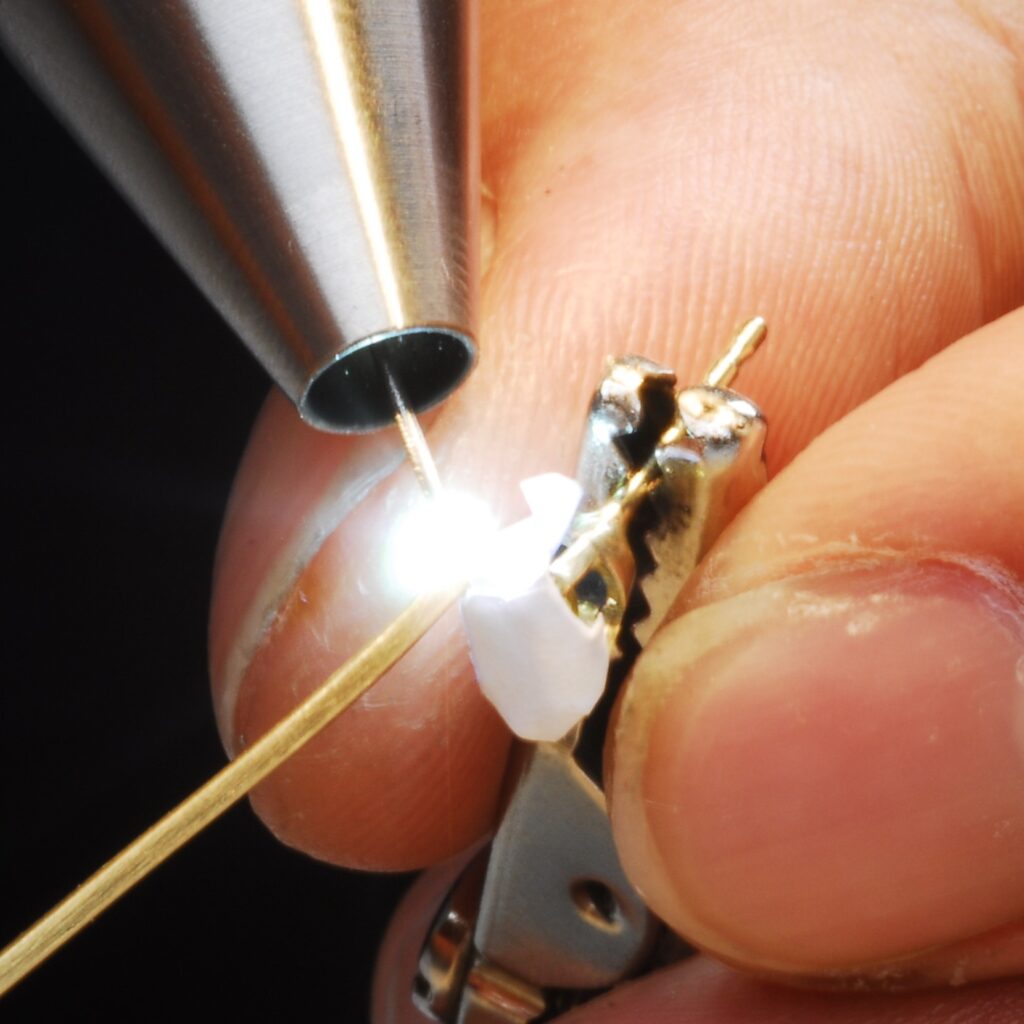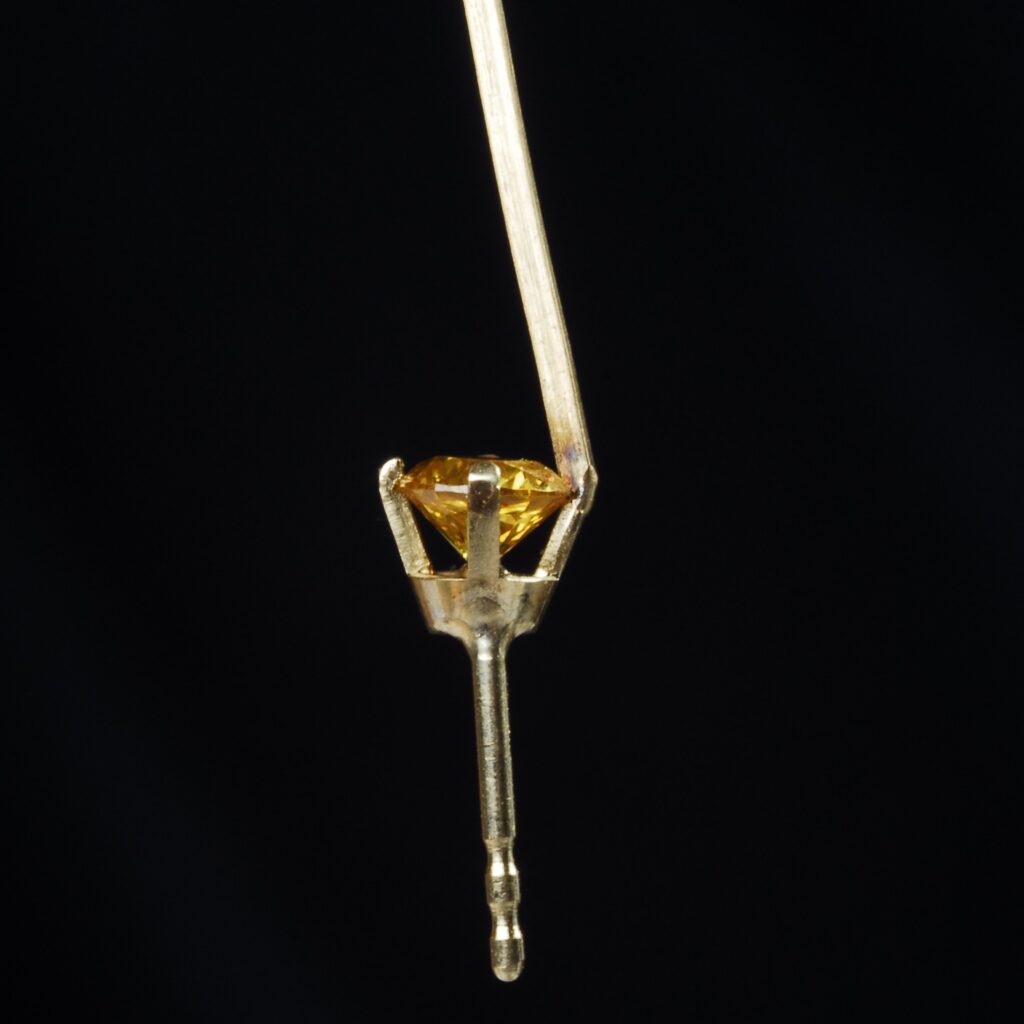Wires and claws
2. in general: prepare electrode
The electrode should always be well ground so that the joint can be touched precisely.
ATTENTION! The first spot weld should be made on a test piece with a freshly ground electrode in order to “work in” the electrode.
The other spot welds will then be more even.
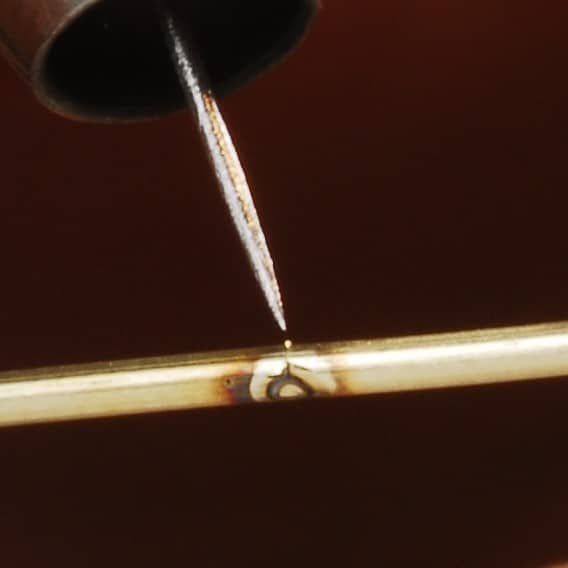
4. in general: set spot welds
To achieve the most durable weld possible, the wires can be pressed together slightly during welding.
This creates a slight thickening, making the weld more stable.
Take care not to select a welding power that is too low.
The welding points should penetrate at least half the wire thickness.
7. start welding
Remember that the wire is now much thinner where you want to weld it.
Bear this in mind when selecting the welding power!
If you cover the stone with some adhesive tape, you will avoid soiling.
To minimize damage to the stone, always weld with the shortest possible impulse time.
Always start work with low power and increase the power gradually if necessary.
Please note that too much power can damage the stone.

